examples
There are many examples in the history of painting of the use of human proportions to structure a work.
Is this pure chance, or a "trade secret" that the masters passed on to their students?

In the image gallery below, these different structural examples show you how the watercolorist wanted to place the focal points and main lines of his watercolors.
Click on the images to view them in close-up.
The structure of each of these watercolors is analyzed in greater detail at the end of this slide show.
Note that while the regulating outline is always the same, the watercolorist doesn't use all the possibilities of the structure to place his or her centers of interest.
In fact, the fewer the points and lines of force, the clearer the final result!
Before analyzing the structure of the watercolors below, let's describe the various lines of force (golden lines) in this regular layout:
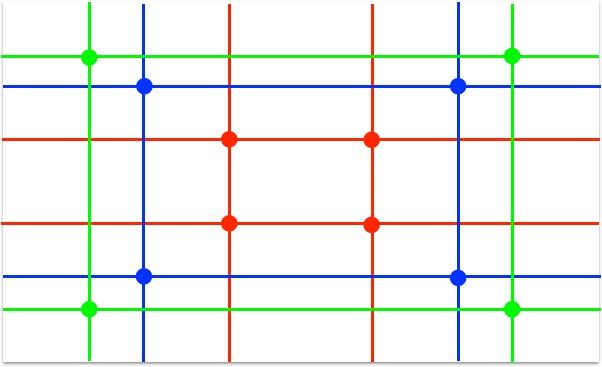
The red lines are called primary gold lines (left, right, top and bottom). They result from dividing the outer dimensions of the picture by 1.618, the golden number.
The blue lines are the secondary golden lines, and the green lines are the tertiary golden lines.
The intersection of lines of the same color are called golden points. These points correspond to the different focal points of the painting, as determined by the painter.
Each of the watercolors analyzed is presented with and without their structural lines, to illustrate both the painter's thinking and the final result.
Click on the images below to enlarge.
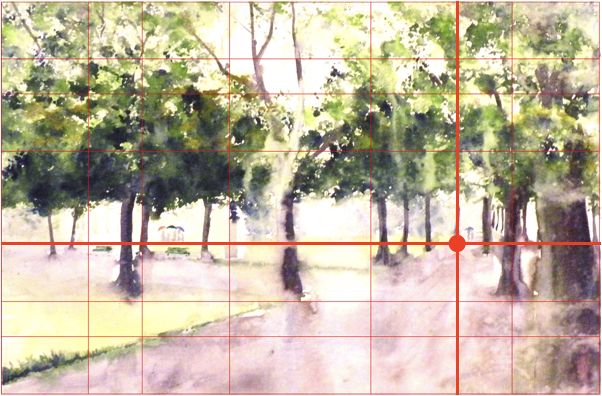
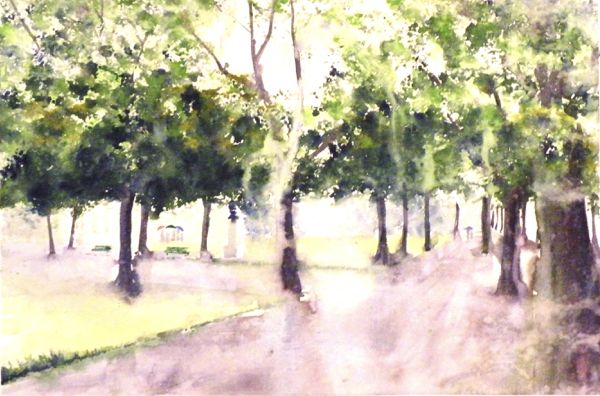
Parc des Bastions, Geneva, Switzerland.
The horizon line is located on the low primary gold line, and the main vanishing point is at the intersection of the horizon and the right secondary gold line. The eye is drawn to the single vanishing point on the horizon line, representing the apparent outcome of the scene painted in this downpour.


Detail of rue Saint Joseph in Carouge, Switzerland.
The two buildings meet on the left primary gold line. The roof of the small house is aligned with the upper secondary gold line. The corner of blue sky at the top left of the picture indicates the position of the summer sun illuminating the street.
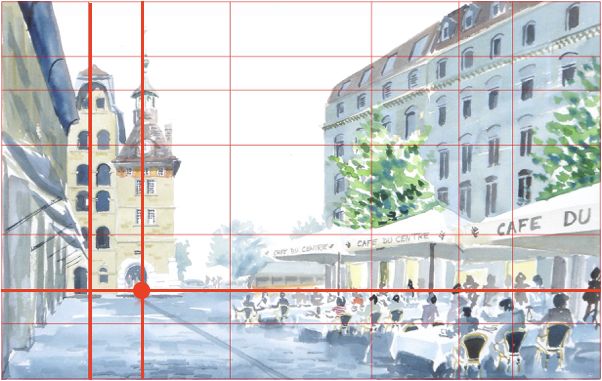

Place du Molard and Molard Tower in Geneva, Switzerland.
The main focal point is the tower's porch. It is located at the intersection of the low secondary gold line (horizon line) and the left secondary gold line.
The adjacent tower is aligned with the left tertiary gold line. The "V"-shaped gap in the sky gives breath to the composition.
The sky is left unpainted to avoid complicating the overall effect.
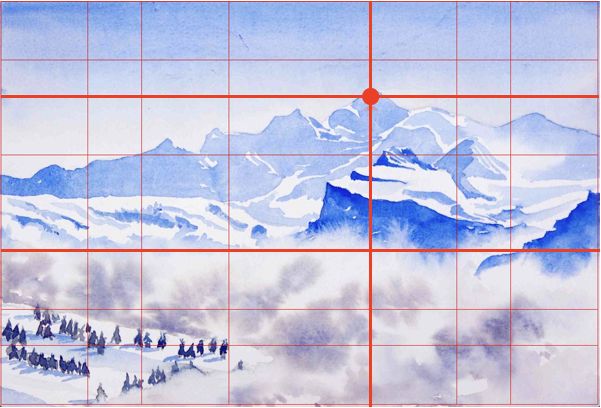

The Mont Blanc range, seen from Les Chavannes in Les Gets, France.
The first thing that catches the eye is the summit of Mont Blanc.
It lies at the intersection of the straight primary gold line and the high secondary gold line.
The fog invading the valley is contained between the painting's lower margin and the lower primary gold line.


Sauzon harbor at low tide. Belle-Ile-en-mer, France.
The main subject of the painting is the small ketch on the left. The base of its mast is at the intersection of the low primary gold line (horizon line) and the left primary gold line.
The position of the horizon line highlights the puddles in the foreground, which also act as vanishing lines, directing the eye towards the opening of the harbour.
The two-masted sailboat on the right is contained between the right primary and right tertiary gold lines, leaving a margin on the right so as not to "decadent" it too much.
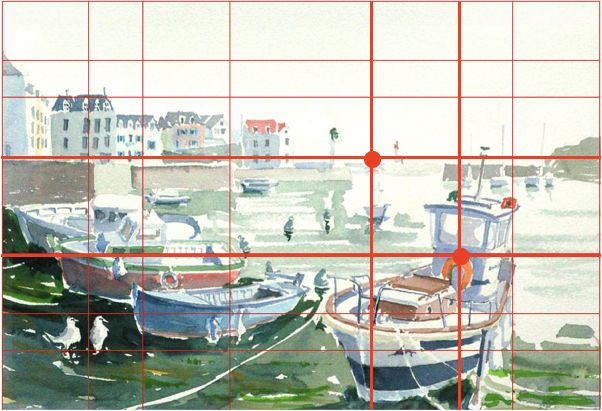

Another view of Sauzon harbor at low tide. Belle-Ile-en-mer, France.
Here, two points of interest: the harbor exit, between the two lighthouses, and the grounded boat on the right.
The exit to the open sea is indicated by the intersection of the upper primary gold line (horizon line) and the right primary gold line.
The center of the right-hand boat's cabin is at the intersection of the low primary gold line and the right secondary gold line.
Setting the horizon high enough highlights the boats in the foreground, aligned on an invisible arc.

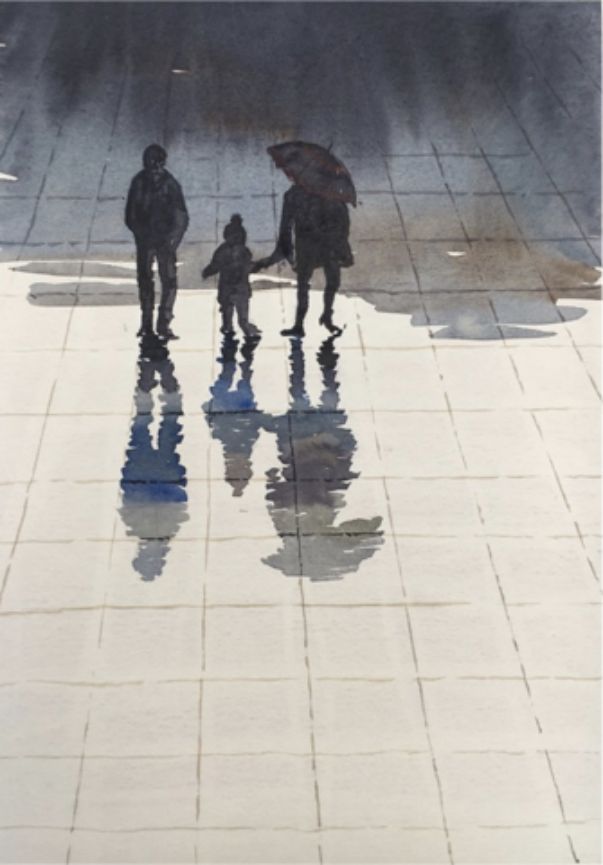
Reflections in the rain (from an anonymous photo).
Between the three silhouettes, the eye is drawn to the smallest. The child and his reflection are located on the left primary gold line.
The base of the silhouettes is aligned with the upper primary gold line.
The elevated position of this focal point makes it easy to imagine the small group walking towards the "reader".
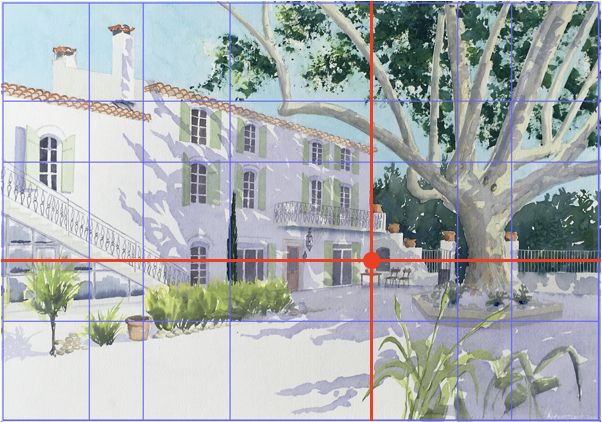
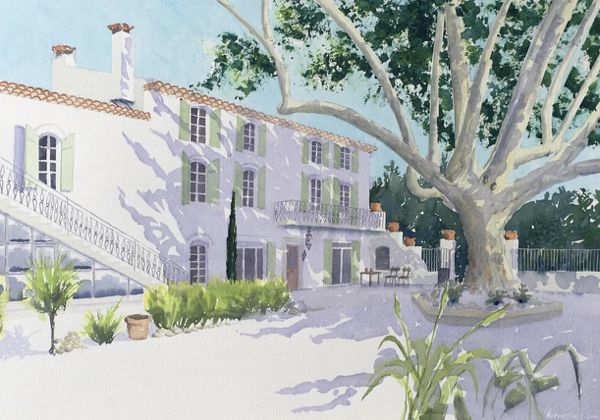
Summer heat and shade in Sainte Cécile les Vignes, France.
The intended focal point is the small shady spot where two glasses and a bottle await the visitor on a table in the cool shade of the plane tree.
To leave room to describe the house, but also the warmth of the ground in full sun, the horizon line is placed on the low primary gold line.
The focal point coincides with the corner of the house and the low wall, forming a refuge for the visitor.
The straight primary gold line delimits the house, while giving the tree room to assert itself and protect the house.
.jpg?t=dea99b13_1445_4a4c_b605_c5b4085f8f7a_d4d25cb0_102f_4a3d_b4bc_7ad46fee84f5)
.jpg?t=dea99b13_1445_4a4c_b605_c5b4085f8f7a_d4d25cb0_102f_4a3d_b4bc_7ad46fee84f5)
.jpg?t=dea99b13_1445_4a4c_b605_c5b4085f8f7a_d4d25cb0_102f_4a3d_b4bc_7ad46fee84f5)
.jpg?t=dea99b13_1445_4a4c_b605_c5b4085f8f7a_d4d25cb0_102f_4a3d_b4bc_7ad46fee84f5)



